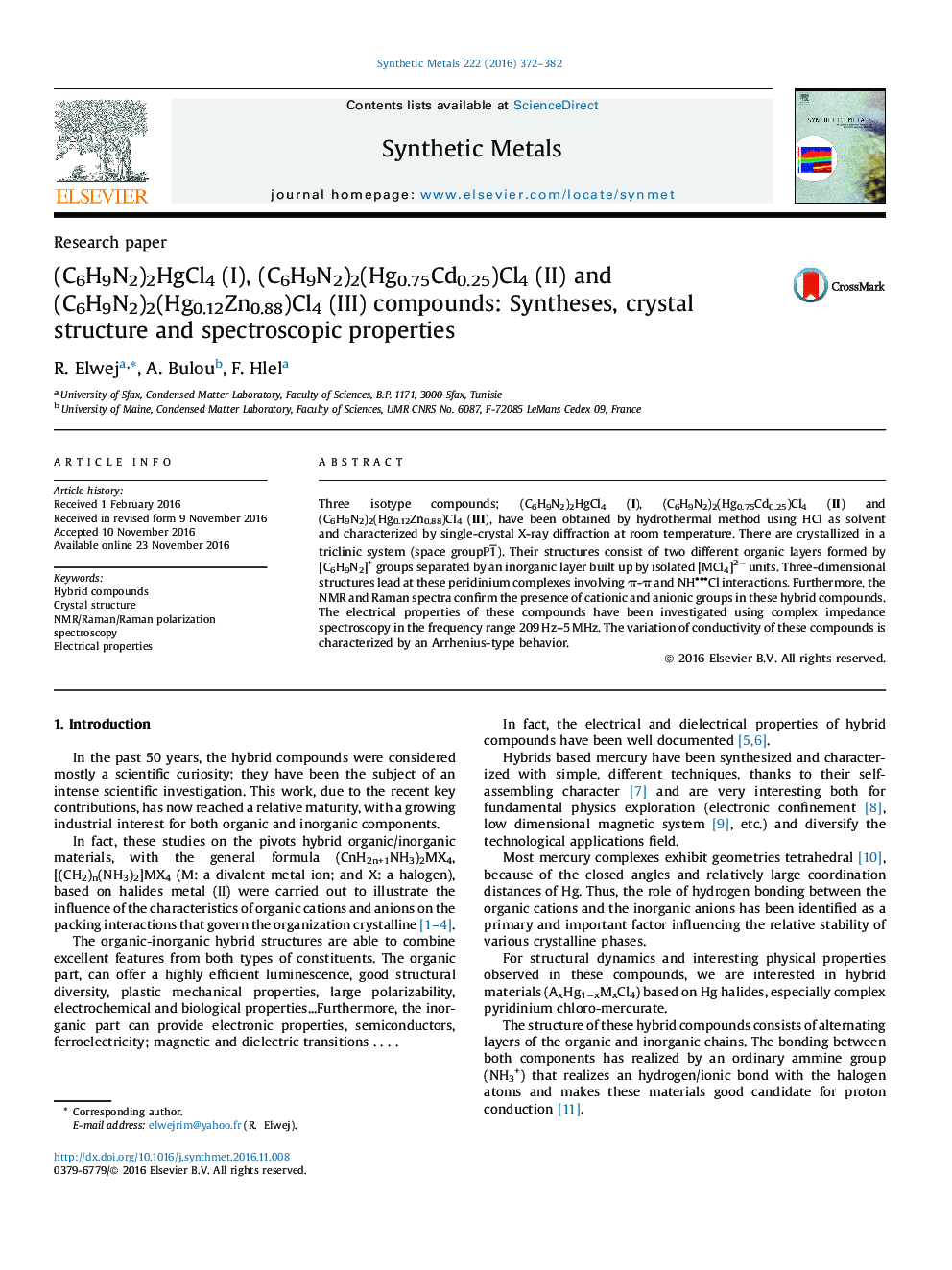| Article ID | Journal | Published Year | Pages | File Type |
|---|---|---|---|---|
| 5435529 | Synthetic Metals | 2016 | 11 Pages |
•Three isotype compounds.•The structure showing the alternation of layers stacked along c direction.•Raman spectra of compounds described the most characteristic bands.•Various models of equivalent circuits are assigned to the compounds studied.
Three isotype compounds; (C6H9N2)2HgCl4 (I), (C6H9N2)2(Hg0.75Cd0.25)Cl4 (II) and (C6H9N2)2(Hg0.12Zn0.88)Cl4 (III), have been obtained by hydrothermal method using HCl as solvent and characterized by single-crystal X-ray diffraction at room temperature. There are crystallized in a triclinic system (space groupP1¯). Their structures consist of two different organic layers formed by [C6H9N2]+ groups separated by an inorganic layer built up by isolated [MCl4]2− units. Three-dimensional structures lead at these peridinium complexes involving π-π and NHCl interactions. Furthermore, the NMR and Raman spectra confirm the presence of cationic and anionic groups in these hybrid compounds. The electrical properties of these compounds have been investigated using complex impedance spectroscopy in the frequency range 209 Hz–5 MHz. The variation of conductivity of these compounds is characterized by an Arrhenius-type behavior.
